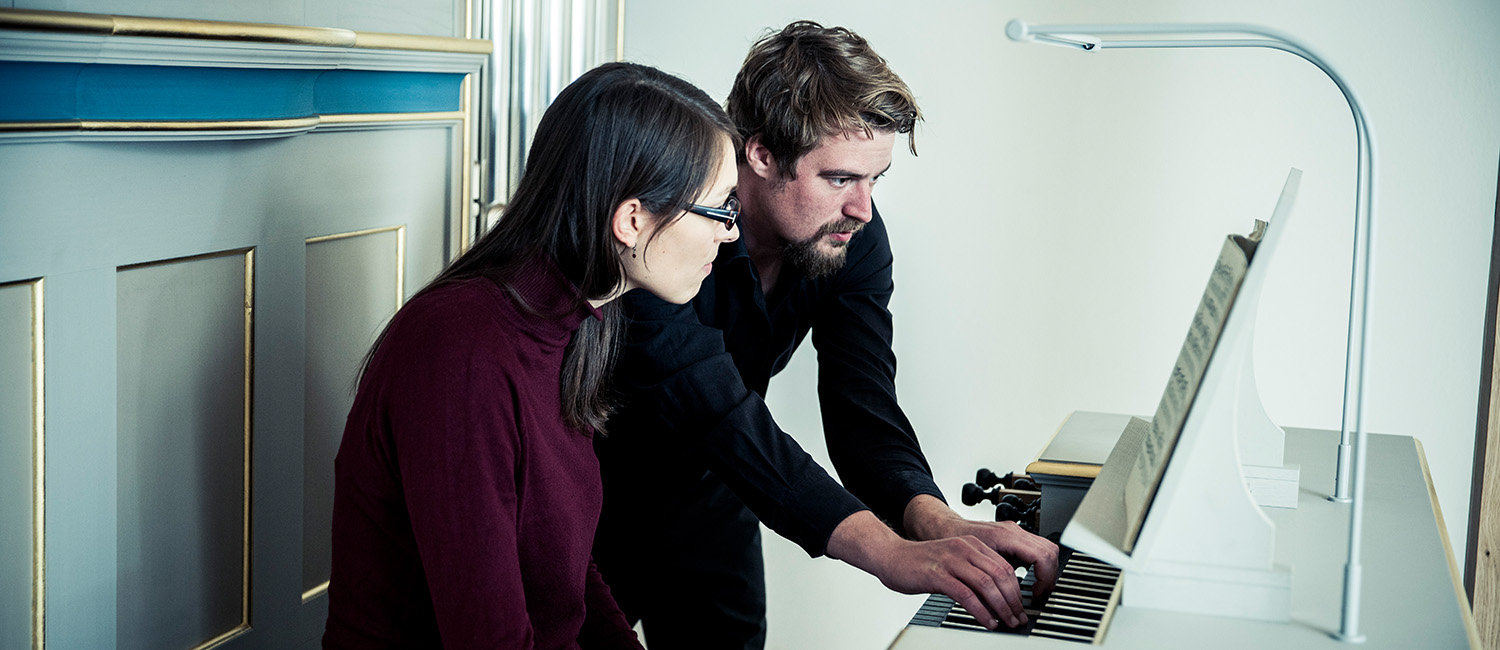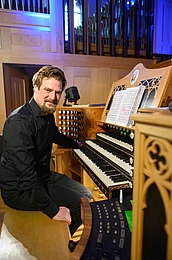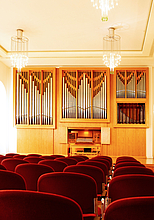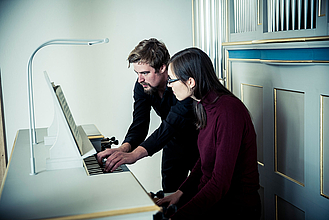Instruments
The University of Music Weimar has a total of six organs, which offer the best conditions for studying, teaching, and concert performances. Additional historic pedal instruments such as pedal pianos or pedal cembalos add to the pool of instruments available. Further information about our most important instruments can be found below:
"Franz Liszt Memorial Organ" in the Herz-Jesu Catholic Church
Located in the Herz-Jesu Catholic Church, the Franz Liszt Memorial Organ is located at an important historical site, as Franz Liszt offered a great deal of support during the building of the church. However, it lacked an adequate instrument until the organ was rebuilt by Orgelbau Waltershausen in 2011.
This large three-manual organ, with 59 stops, including a remote console in the dome over the transept, is an impressive piece, thanks to its unique concept. The instrument systematically reproduces Franz Liszt’s experiences with the organs available to him in central Germany.
The Trost Organ in Waltershausen and Altenburg, the Peternell Organ, which was influenced by Herder’s choirmaster J. G. Töpfer, and the large Ladegast Organ in Merseburger Cathedral, were crucial models for this newly built organ, which reproduces the seamless development from the late Baroque into German Romanticism.
This organ captivates listeners, in particular, with its extremely colourful range and its dynamic ambitus.
→ See attachment for specifications (PDF)
Konzertsaal Organ Am Palais
The three-manual Konzertsaal Organ of the LISZT University, with its 43 stops, was built by Jehmlich organ-builders in 1993. Overhauled in 2008 by Orgelbau Walterhausen, the range of tones was substantially expanded, and the instrument was given a comprehensive new intonation. As a result, this organ offers characteristic individual colourfulness, stylistic versatility and a warm sound.
→ See attachment for specifications (PDF)
Wegscheider Organ in the central German Baroque style
The new instrument from Wegscheider organ-builders draws systematically on the Baroque organs of central Germany. Gottfried Silbermann is a stylistic exception in this organ-building region: he has enriched the soundscape of central Germany decisively, with his French influences. In collaboration with Johann Sebastian Bach, his student Zacharias Hildebrandt created a large Baroque "synthesis organ" in the Wenzelskirche Naumburg. This combines southern, central and northern German elements with French and Italian influences.
The Wegscheider Organ at the LISZT University, completed in 2019, pursues the same objective: while its construction and scaling has strong overtones of Silbermann and Hildebrandt, its intonation harks back to Thuringia and southern Germany, in particular. The unique synthesis instrument that emerged therefore offers the greatest level of stylistically confident versatility, without sacrificing its authenticity. Its highly sensitive chamber music-type tonal quality and the free-standing console, offer the best conditions for concerts, teaching and practice.
→ See attachment for specifications (PDF)



